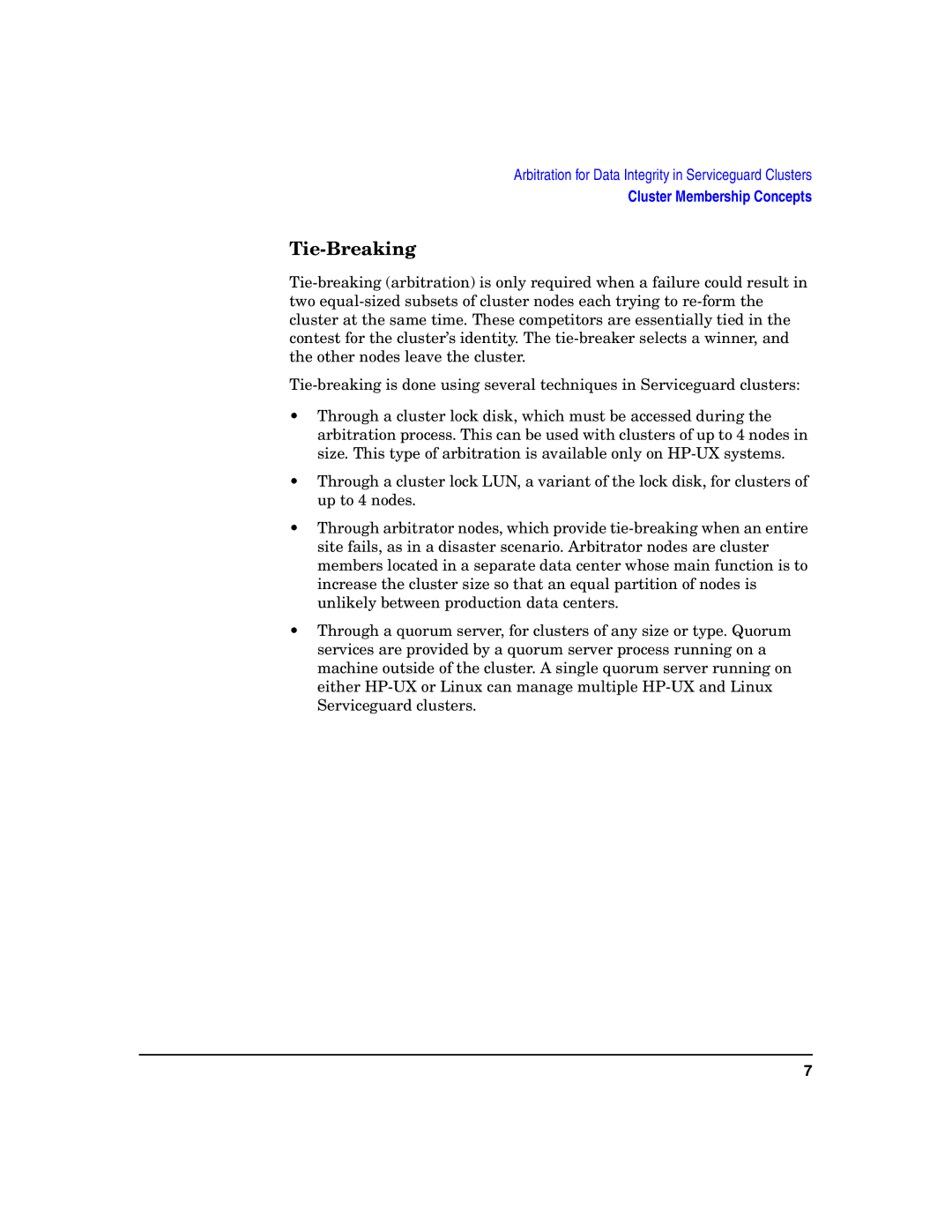
Arbitration for Data Integrity in Serviceguard Clusters
Cluster Membership Concepts
Tie-Breaking
Tie-breaking (arbitration) is only required when a failure could result in two equal-sized subsets of cluster nodes each trying to re-form the cluster at the same time. These competitors are essentially tied in the contest for the cluster’s identity. The tie-breaker selects a winner, and the other nodes leave the cluster.
Tie-breaking is done using several techniques in Serviceguard clusters:
•Through a cluster lock disk, which must be accessed during the arbitration process. This can be used with clusters of up to 4 nodes in size. This type of arbitration is available only on HP-UX systems.
•Through a cluster lock LUN, a variant of the lock disk, for clusters of up to 4 nodes.
•Through arbitrator nodes, which provide tie-breaking when an entire site fails, as in a disaster scenario. Arbitrator nodes are cluster members located in a separate data center whose main function is to increase the cluster size so that an equal partition of nodes is unlikely between production data centers.
•Through a quorum server, for clusters of any size or type. Quorum services are provided by a quorum server process running on a machine outside of the cluster. A single quorum server running on either HP-UX or Linux can manage multiple HP-UX and Linux Serviceguard clusters.
